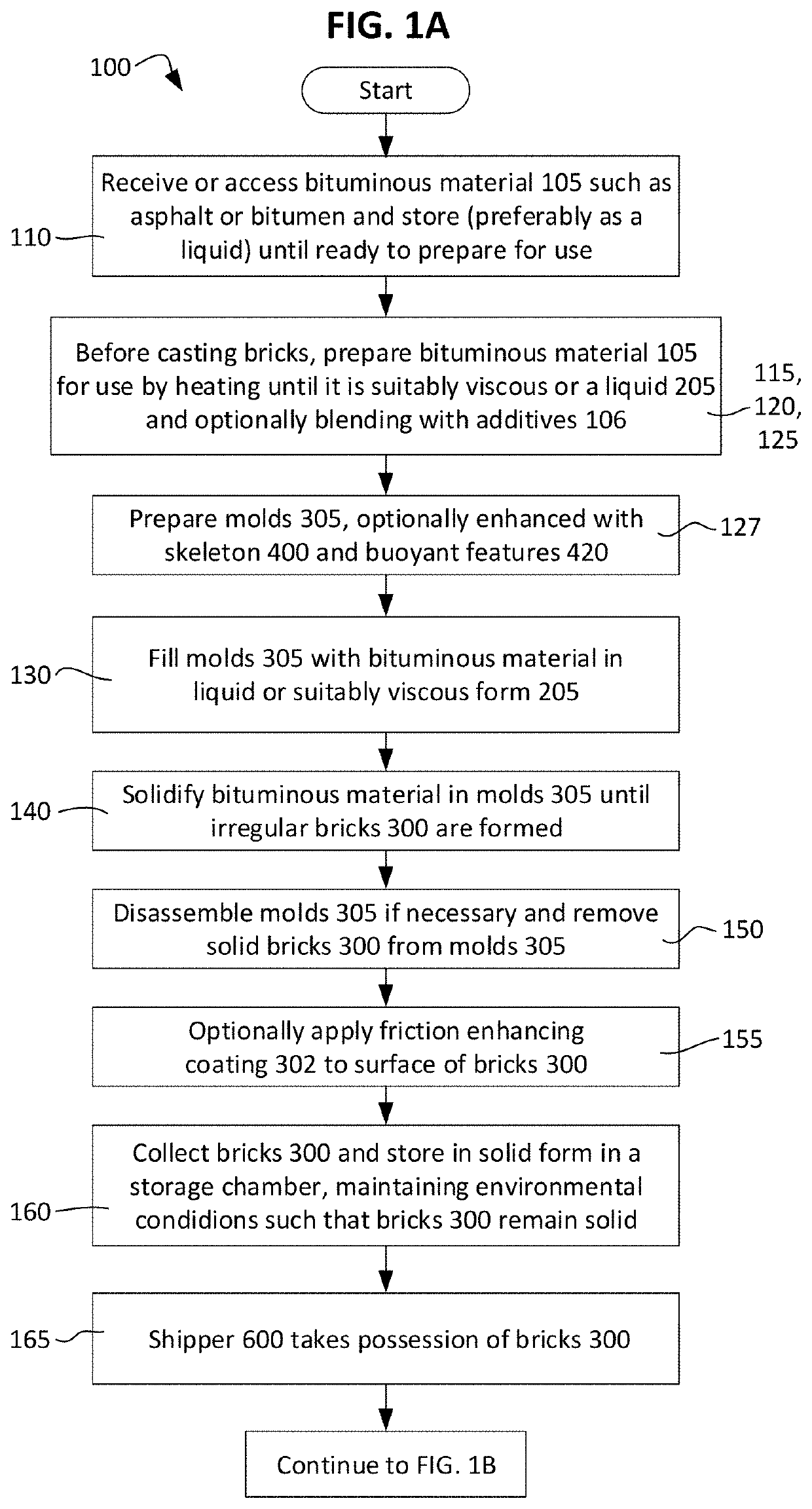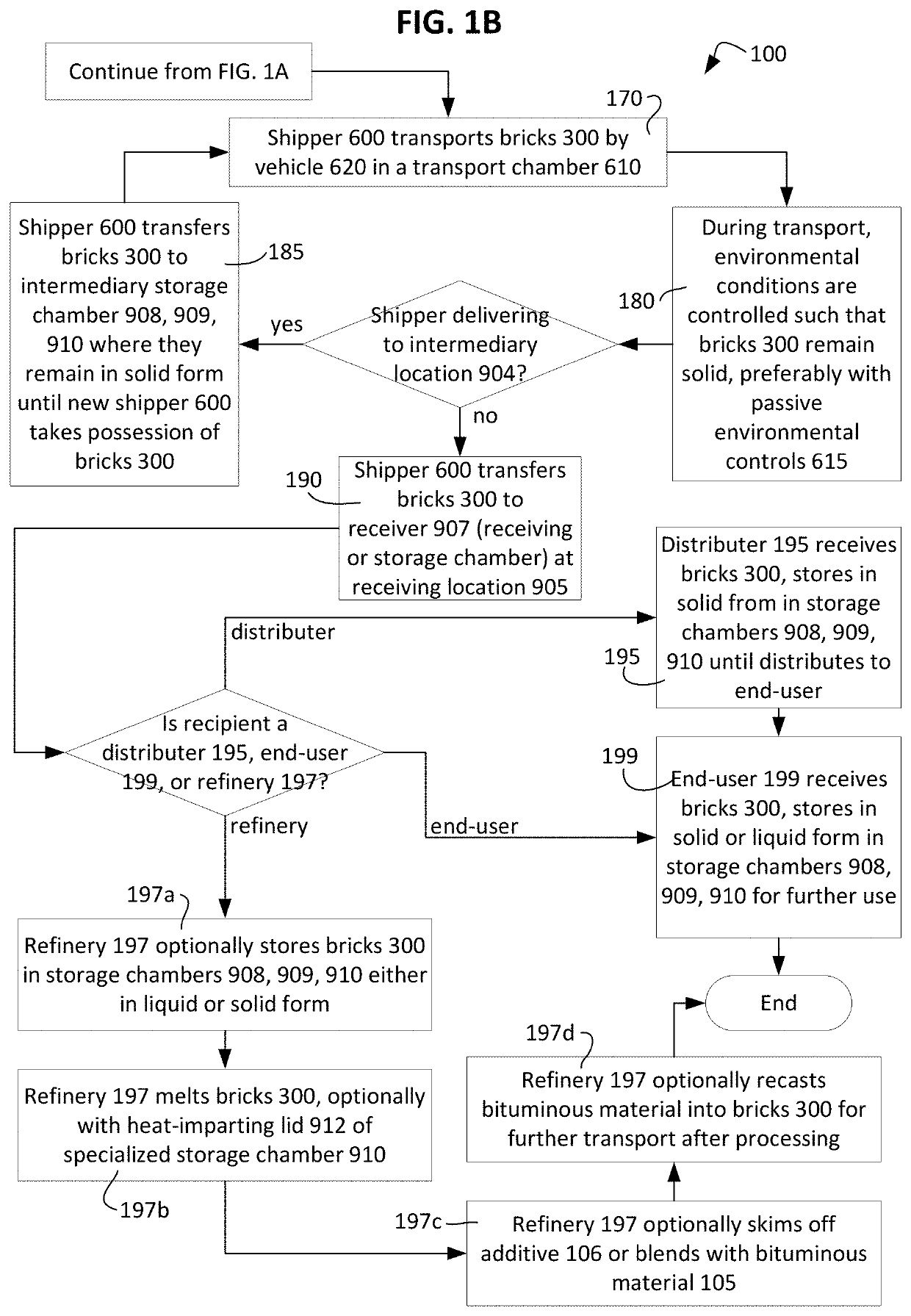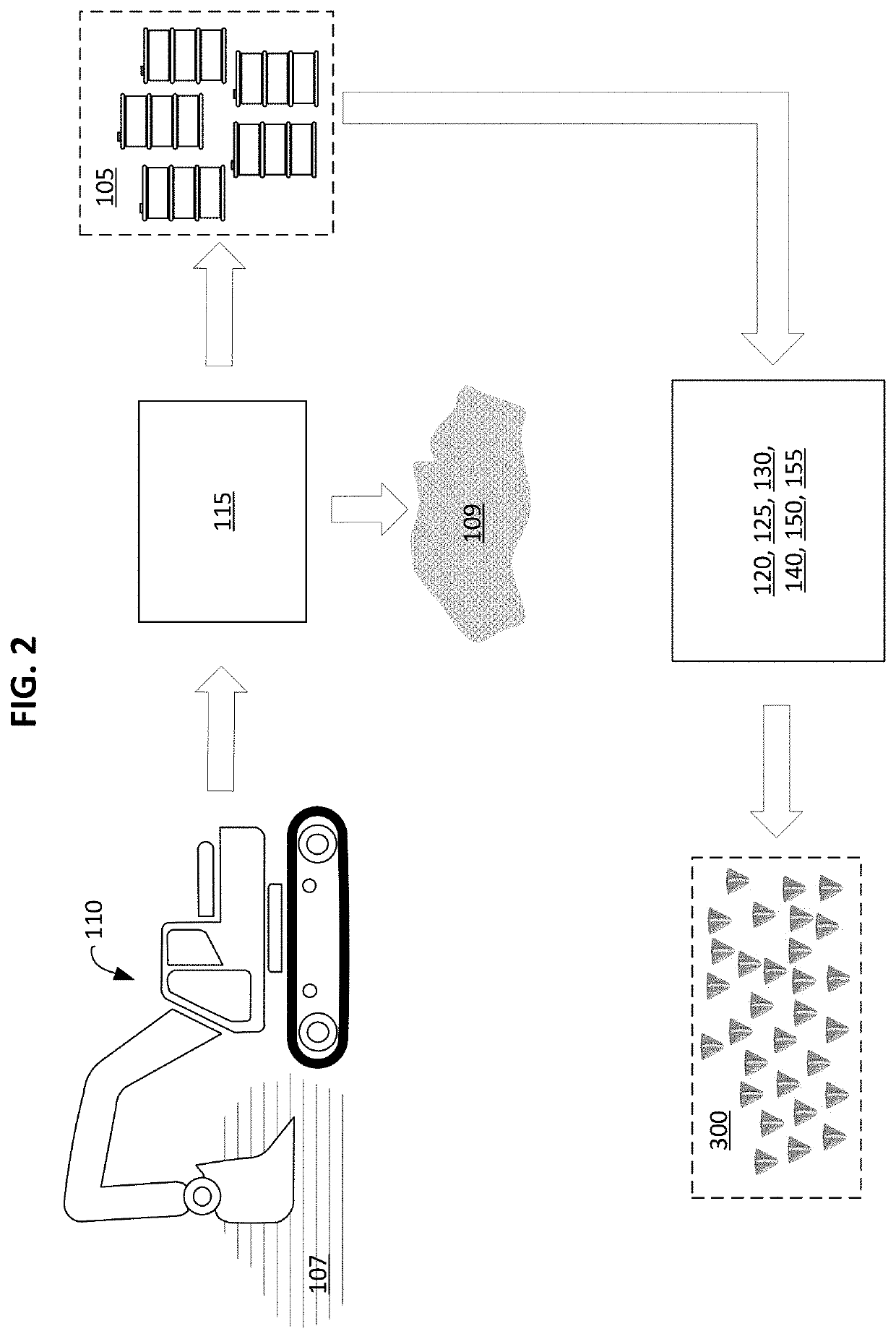Solid Formations of Non-Volatile Bituminous Materials Suitable for Reducing Carbon Dioxide Emissions During Transport
a technology of non-volatile bitumen and solid formations, which is applied in the field of solid formations of bituminous materials, can solve the problems of increasing and reducing the threat to the environment. or eliminating the threat, the effect of reducing the reliance on pipelines
- Summary
- Abstract
- Description
- Claims
- Application Information
AI Technical Summary
Benefits of technology
Problems solved by technology
Method used
Image
Examples
Embodiment Construction
[0061]FIGS. 1A and 1B illustrate the preferred embodiment of the overall process 100 of solidifying, transporting, storing, and receiving bituminous material 105 without diluent, also referred to herein as neatbit or non-volatile bituminous material 105, to receiving locations 905 such as those belonging to distributors, end-users, and refineries. The terms “bituminous material,”“heavy oil,”“extra heavy crude oil,”“heavy crude oil,”“heavy crude,”“bitumen,”“asphalt,”“bituminous material 105,” and “bituminous materials 105” used independently herein or in any combination herein shall be understood to cover any type of oil, and any application thereof, that falls within the U.S. Geological Survey's (USGS) definition of heavy oil and bitumen as described in USGS Fact Sheet 70-03 and further includes heavy crude oil, extra heavy crude oil, bitumen, and asphalt. Additionally, it includes, for purposes of this invention, other high molecular weight hydrocarbons and other non-bituminous mat...
PUM
| Property | Measurement | Unit |
|---|---|---|
| angle | aaaaa | aaaaa |
| angles | aaaaa | aaaaa |
| temperature | aaaaa | aaaaa |
Abstract
Description
Claims
Application Information
 Login to View More
Login to View More - R&D
- Intellectual Property
- Life Sciences
- Materials
- Tech Scout
- Unparalleled Data Quality
- Higher Quality Content
- 60% Fewer Hallucinations
Browse by: Latest US Patents, China's latest patents, Technical Efficacy Thesaurus, Application Domain, Technology Topic, Popular Technical Reports.
© 2025 PatSnap. All rights reserved.Legal|Privacy policy|Modern Slavery Act Transparency Statement|Sitemap|About US| Contact US: help@patsnap.com



